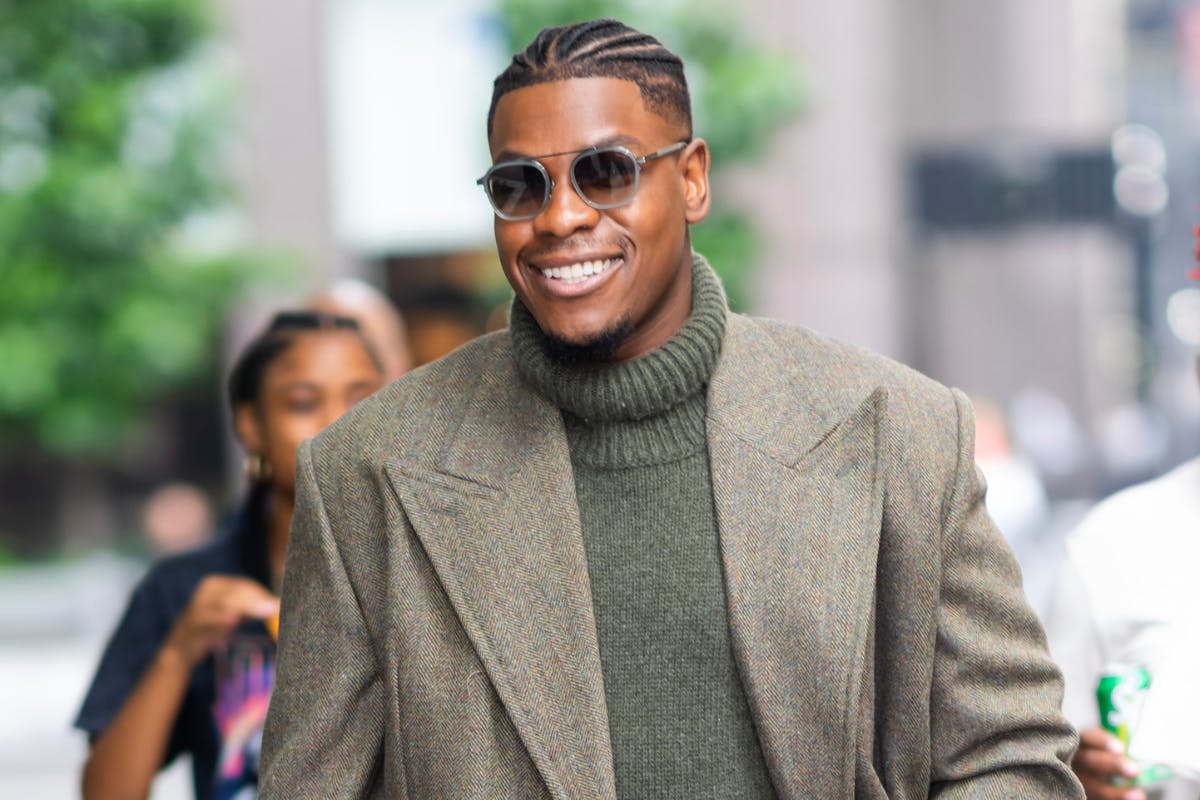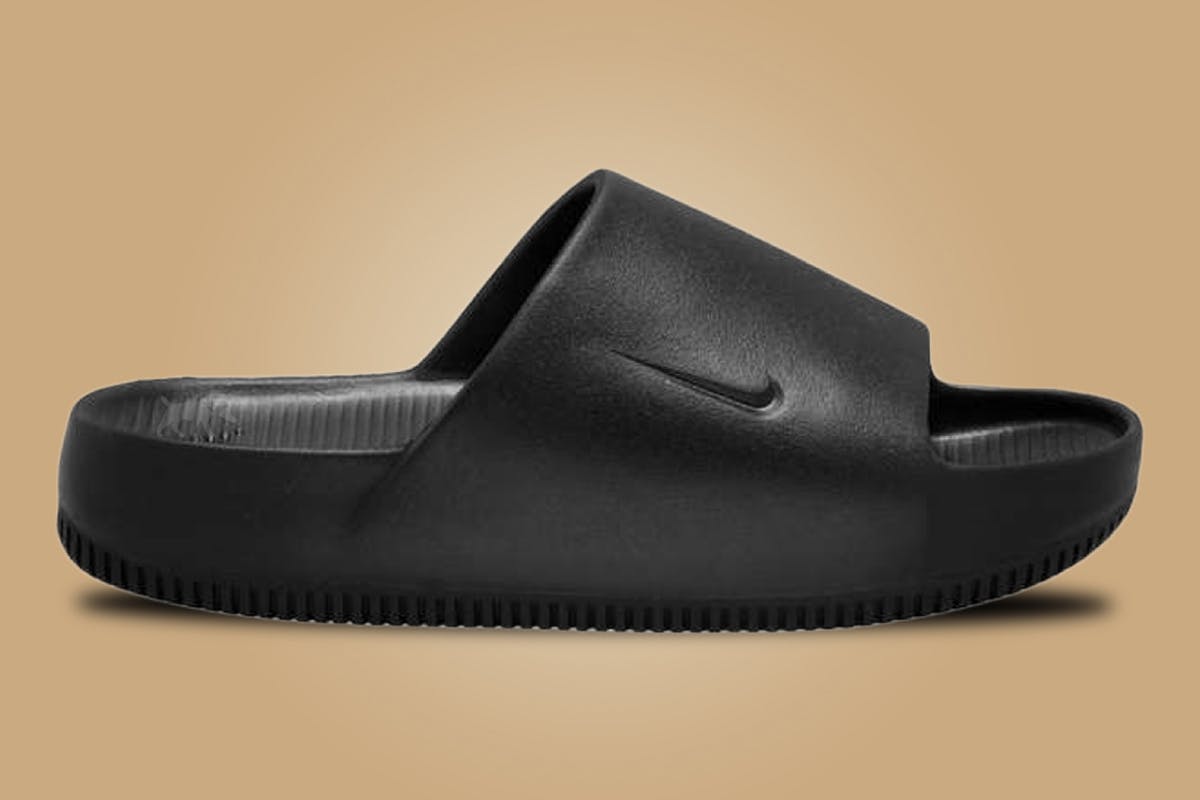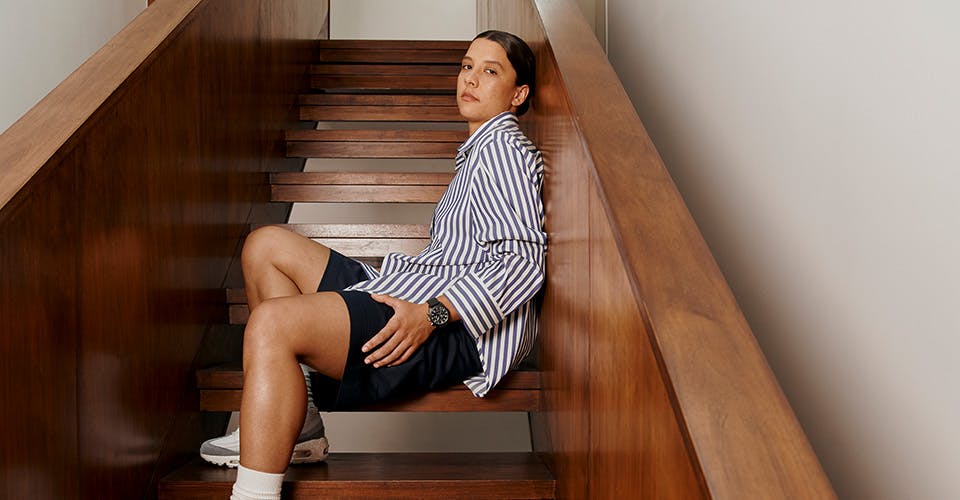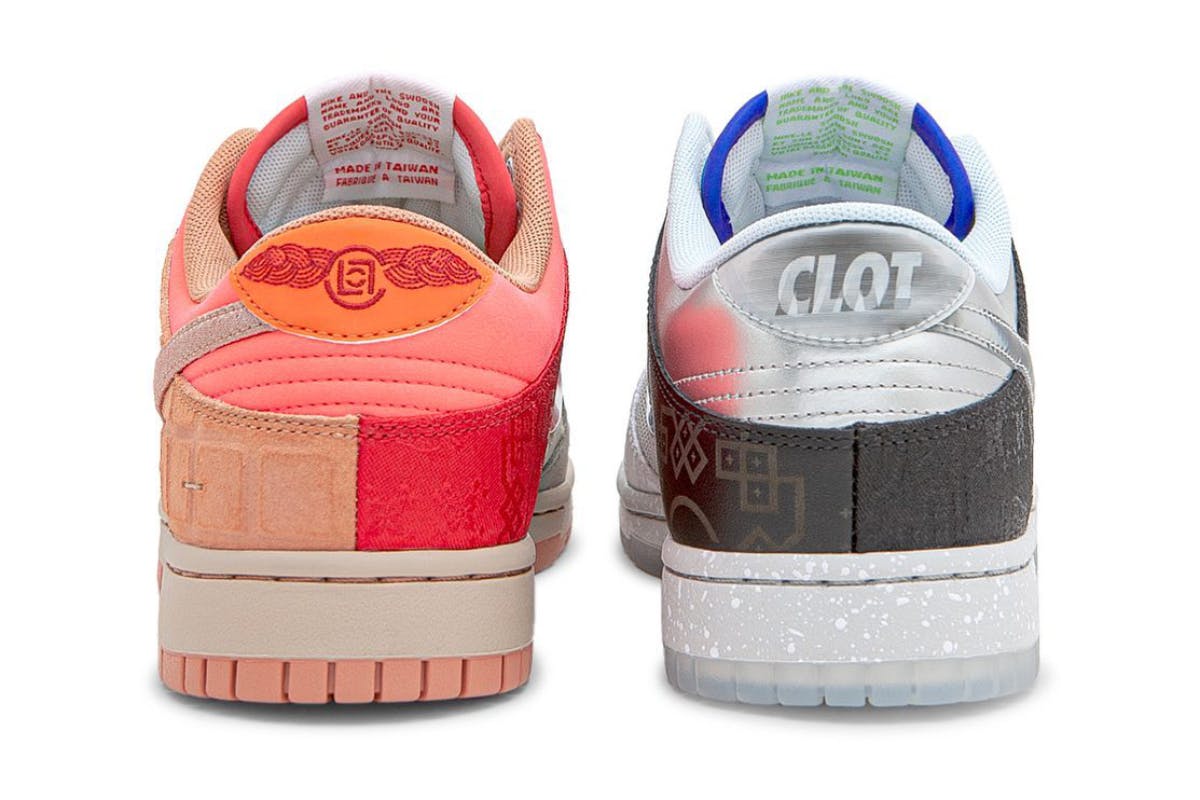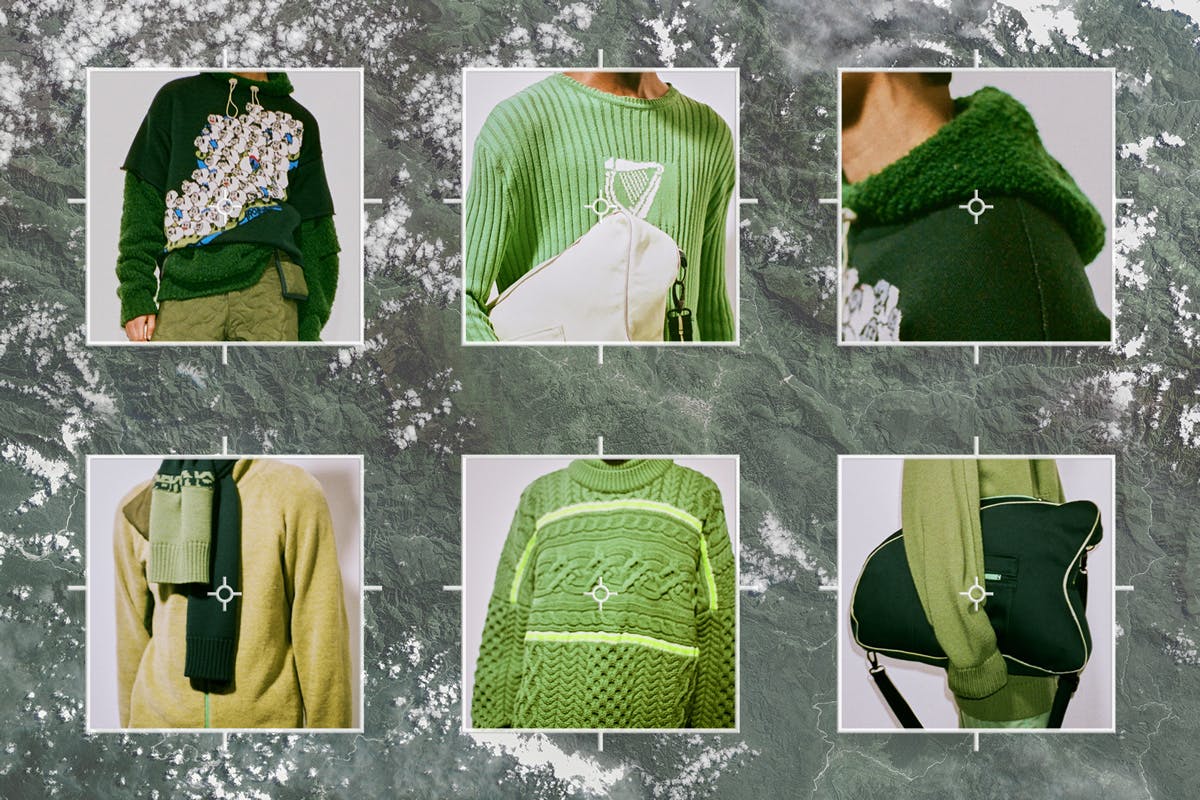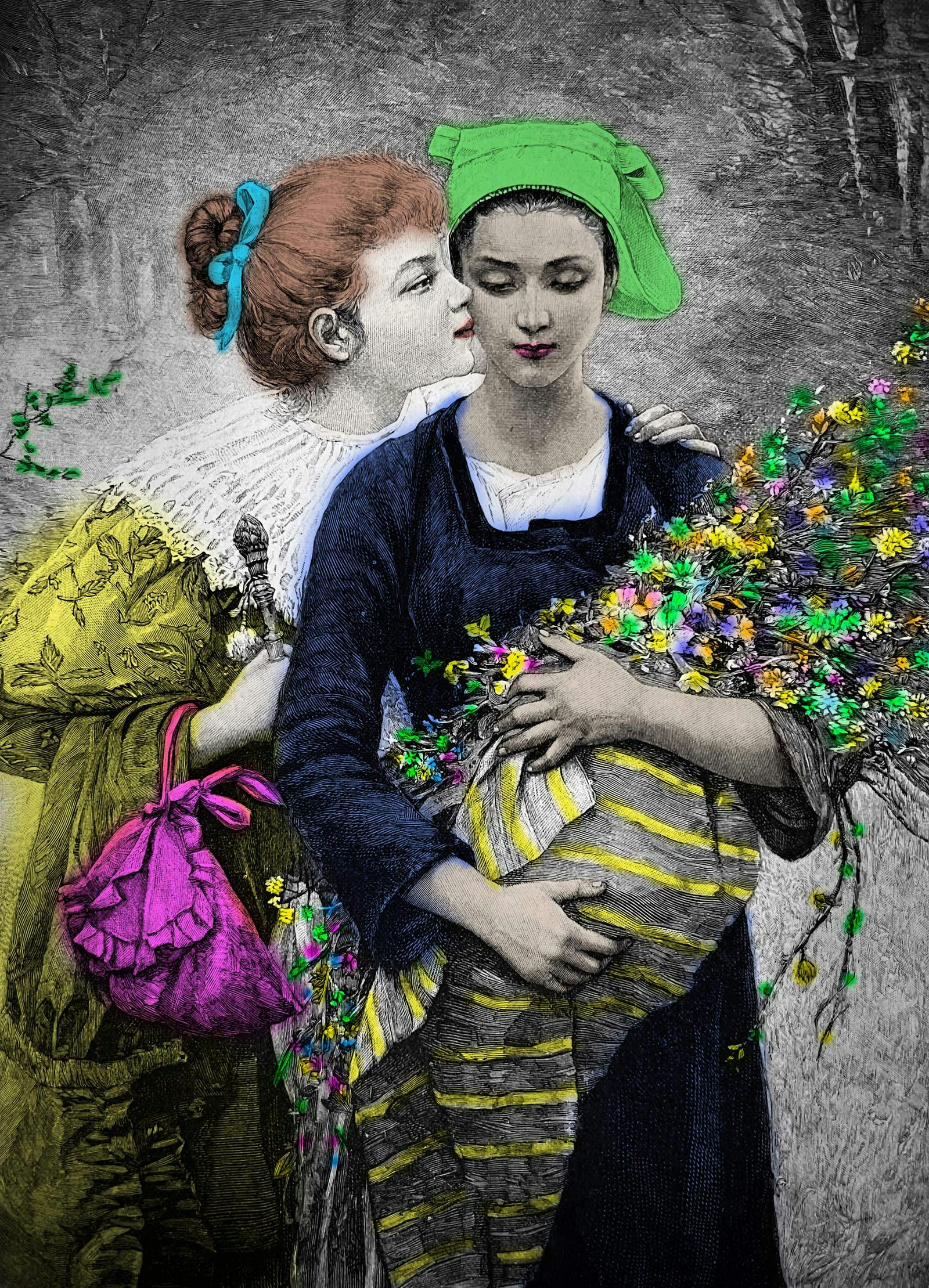
It’s 2014, after Christmas break during my senior year of high school, and I’m rolling up to my suburban campus wearing the gayest outfit my teenage self can imagine: a Tegan and Sara concert tee under a plaid flannel shirt, and purple Dr. Martens. Earlier that morning, I donned these items with uncharacteristic aplomb. I had just come out as a lesbian to my family and friends and finally felt safe, and ready, to express my queerness sartorially. I’m proudly queer, and now I want the world to know it at a glance.
I’d been unable to find a local queer community, so inspiration for this supremely gay aesthetic was up to me. However, it was not the product of my seventeen-year-old imagination alone. In the months before coming out, I turned to the internet to find answers to burning questions like, “What do lesbians wear?” I pored over guides authored by out-and-proud lesbians on Tumblr, Autostraddle, and DapperQ, and photos of so many influential queer fashion icons who came before me.
My research steered me toward queer-coded clothes and accessories — think Birkenstocks, Docs, carabiners, and oversized flannel shirts. At the time, my straight classmates balked at my Birks and baggy tops. It didn’t matter how empowered I felt; they were appalled that I happily chose to wear “unflattering” styles.
A lot has changed in the nine years since. I now identify as bisexual and nonbinary, though I still participate in the New York City Dyke March annually and feel deeply connected to the lesbian community. I also write about LGBTQ+ culture professionally. If my work has taught me anything, it’s that there is no singular way to be queer — and no one way that queer people dress.
My teenage interpretation of lesbian style was just that: mine.
Still, I didn't come to it in a vacuum. Reflecting on those initial choices I made, I see that I was reacting to the world around me, and how it taught me to signal queerness in a way others would easily recognize. In 2023, the band tees and clunky footwear I sported in high school no longer feel identifiably “gay.” The Birkenstocks my straight peers rolled their eyes at? They’re now wearing them too. Ditto for T-shirts and flannels. Stroll through Williamsburg or Silverlake on any given weekend, and you’ll see a plethora of carabiners, ties, and work pants — items that once safely and subtly signified queerness to like-minded queers have become trendy. They’ve even cropped up on the runway and in pop culture (think Dua Lipa wearing Chopova Lowena’s carabiner skirt and Gucci collaborating with Dickies).
This phenomenon reflects shifting cultural attitudes toward LGBTQ+ people. Even amid the current firestorm of anti-LGBTQ+ state legislation in the United States, gay and lesbian Americans are more socially accepted than ever, and what was once considered gay and lesbian fashion is too. Generally speaking, straight men and women aren’t afraid to “look gay” anymore because the aesthetic no longer necessarily signals identity. I’m glad to see minds change, and I’m not in the business of gatekeeping or policing anyone’s self-expression. But this mainstreaming effect does pose an interesting dilemma for lesbians and other queer women, specifically. In an age where queer-coded styles are becoming ubiquitous, what does it mean to “dress gay”? Hell, is it even possible to signal our identity through fashion anymore?
---
Deliberate fashion choices are woven into the fabric of queer history and culture. “Clothes and accessories have been used in so many ways to signal identity,” says lesbian fashion historian Eleanor Medhurst, author of the blog Dressing Dykes. Medhurst specifically examines how lesbians dressed throughout history. She has found that in contexts where queer people weren’t socially accepted, including the US prior to the late-20th century, they sometimes leaned on subtle cues to find each other out in the world without jeopardizing their safety.
Medhurst cites violets as an example. In 1920s Paris, there was a “thriving community” of upper-class lesbians who had the privilege to express themselves freely, she says. At performances of a popular play called The Captive, which contains a lesbian relationship, lesbians in the audience would wear a violet on their lapel to signal their identity to others. This was a nod to the flower referenced in the writings of the ancient Greek poet Sappho, whose name gives us the word “sapphic”; her homeland, the island Lesbos, inspired the term “lesbian.”
Accessories like pinky rings, handbags, and carabiners have also been used to signal lesbian identity over the years. In the early 20th century, says Medhurst, some lesbians wore pinky rings; decades later, butches in London’s lesbian bar scene adopted the discrete accessory to denote their butchness. Femmes who frequented Gateways club, one of the world’s longest-surviving lesbian nightclubs, carried black patent-leather handbags.
These small, subtle signals were much safer in an era when being openly gay — or simply dressing in a gender non-conforming way — could have dangerous social or legal repercussions. “You could wear a pinky ring and have a nondescript or suitably feminine outfit, but still signal to those who might know this code that, ‘Look, I'm one of you,’” Medhurst explains. By adhering to this discreet code, lesbians could find each other without outing themselves.
By the ‘70s, when the US gay liberation movement was in full swing and queer activists were using more radical protest tactics to combat stigmas and advocate for their rights, their fashion choices evolved to reflect this ethos. “More overt displays of queerness” –– think queer slogan t-shirts and pins — became increasingly prevalent, says Medhurst.
Of course, we can’t talk about grassroots activism in the ‘70s without mentioning the lesbian feminist movement. Many lesbian feminists wore practical, traditionally masculine clothing, such as overalls, jeans, and work boots. These era-defining styles prioritized women’s comfort over appearing conventionally feminine — a radical notion at the time. In more recent decades, they have also become increasingly popular among straight women. I don’t think that’s a coincidence, nor do I think it’s necessarily a bad thing.
Medhurst agrees. “Women deserve to wear comfortable clothes,” she says. “They’ve been told so often, ‘No, don't be comfortable. Wear tight dresses and short skirts.’ I can't condemn this mainstreaming of queer fashion too much because queer fashion is great.”
---
I’m not the first queer person to point out how lesbian fashion items have become more mainstream. In fact, scholars have been having this conversation for decades. “How to look fashionable and move with the changing trends, while still signifying as lesbian?” wrote art historian Reina Lewis in a piece titled “Looking Good: The Lesbian Gaze and Fashion Imagery” for the spring ’97 issue of the Feminist Review. “At one time it was relatively easy: you wore whatever you wanted and combined it with big shoes or boots. But then everyone started wearing Doc Martens and footwear’s lesbian coding was undermined.”
In other words, if everyone is dressing gay, then no one is dressing gay. When historically queer styles infiltrate mainstream fashion trends, they lose the association that differentiated them in the first place.
As lesbian culture critic and author Jill Gutowitz wrote in “Sapphic Style Is Going Mainstream” for Harper’s Bazaar in 2022, it’s hard not to feel “resentful” when “androgynous looks that lesbians were once shamed for, that were once visual identifiers among our own community, are now Urban Outfitters staples.” Queer people often pioneer fashion trends, but we rarely get recognition, let alone praise, for our innovations. Case in point: the New York Post’s shoddy news scrape of Gutowitz’s cultural analysis, complete with a headline that deemed dressing like a lesbian “sexy” and “powerful” — but only because straight women were doing it too. And this is especially true for lesbians, says Medhurst. Queer men tend to exhibit more flamboyant styles, whereas lesbians and queer women have sported workaday looks considered “unfashionable.” Our styles might not seem en vogue, but “everyone else follows [us] anyway.”
Which brings me back to my original question, a variation of the same query Lewis posed more than 20 years before me: How are queer women supposed to signal identity through fashion when everyone is dressing like us?
Setting plays an undeniable role here. I’m lucky to live in a city with many gay bars and pop-up queer parties. In these community-oriented spaces, queer people don’t have to rely so heavily on sartorial cues. Their queerness is assumed.
Sapphics are also developing new signals, visual and otherwise, in real time. The advent of the internet and social media has broadened their reach, helping contemporary queer fashion trends and cultural moments spread further, faster. Who could forget when “Do you listen to Girl in Red?” — a reference to the lesbian indie-pop artist of the same name — became every sapphic Tiktoker’s favorite shorthand for “Are you into girls?” And consider lesbian earrings, another trend popularized on the video-sharing platform in 2020. These kitschy accessories made from unexpected objects can queer up any outfit. As queer Tiktoker Jordan Ingersoll told them., “If I were to see a girl/feminine-presenting person out in public wearing rubber ducks as earrings, I would know immediately that they are a lesbian/queer.” You could say the same about clothing that explicitly references the current queer zeitgeist — for instance, my growing collection of MUNA merch. Even when paired with now-generic styles, these items can communicate queerness.
“Part of the solution is that we will keep finding our own ways to reinterpret these clothes and styles that keep them fresh and distinctly queer,” adds Medhurst. “We can't really control what everyone else is doing. And if we're dressing so well, we can't help that everyone wants to dress like us.”
My adult self tends to agree. I’m excited to see people of all genders and sexual orientations explore authentic self-expression through style. Fashion should be playful and expansive, not prescriptive. It makes me particularly happy to see straight women embrace looks that buck traditional gender norms. Patriarchal beauty standards run deep, and they harm all of us in different ways. And I have to believe there is more to being clockably gay than just slipping on a pair of Docs or a tailored suit. After all, you can’t separate clothes and accessories from the person wearing them — if my queerness isn’t legible via my style alone, you won’t miss it when I give you the gay nod or ask about your astrological birth chart.
These days, you can still find me in clunky combat boots, although I’ve traded my beloved Tegan and Sara tee for patterned button-down shirts. Times have changed — I’ve changed — but my style still reflects my queerness. I take pride in knowing that the aesthetic choices I make to “look gay” stem from a longstanding tradition of queer self-expression. That’s something no trend can negate.
